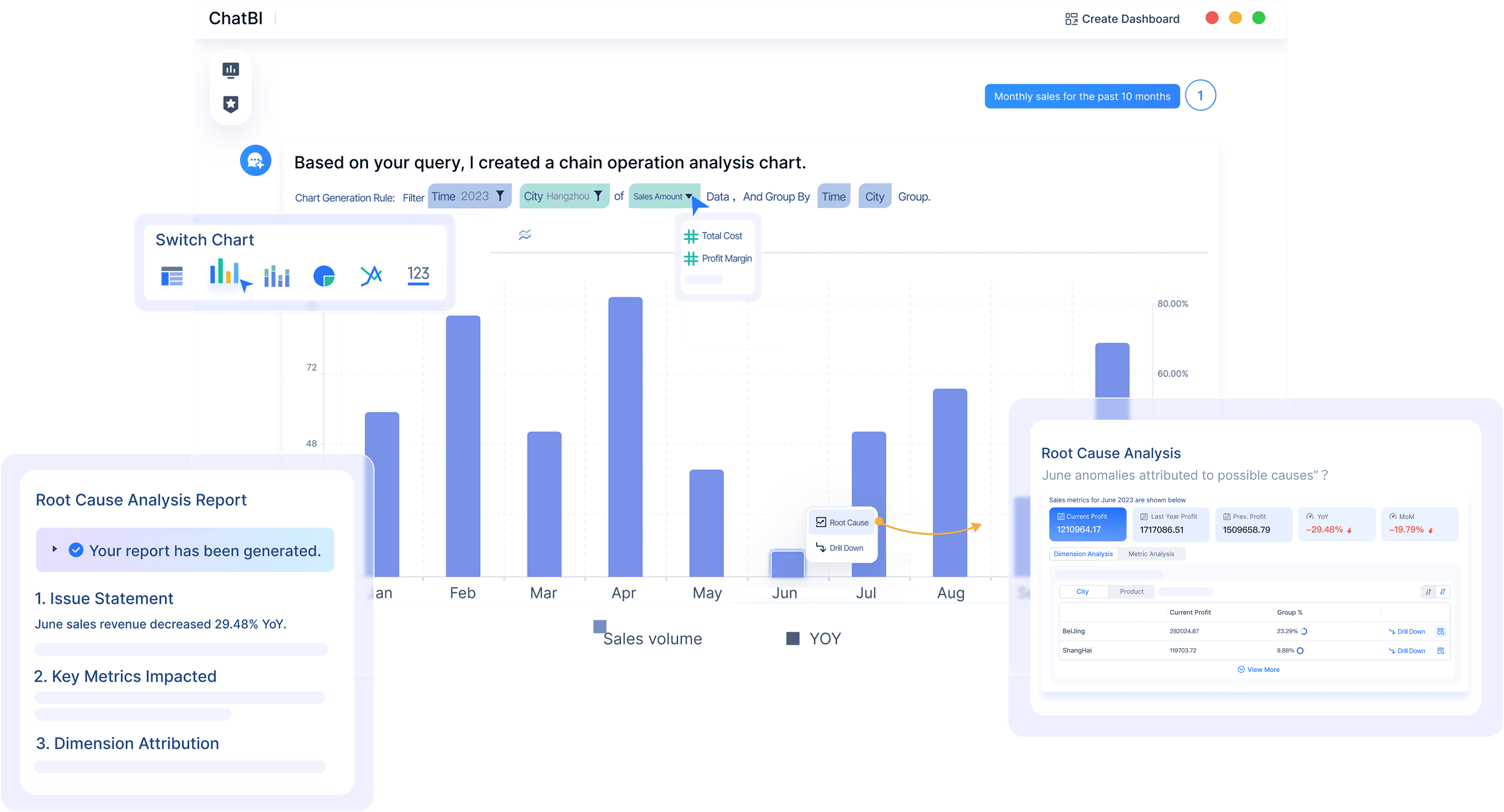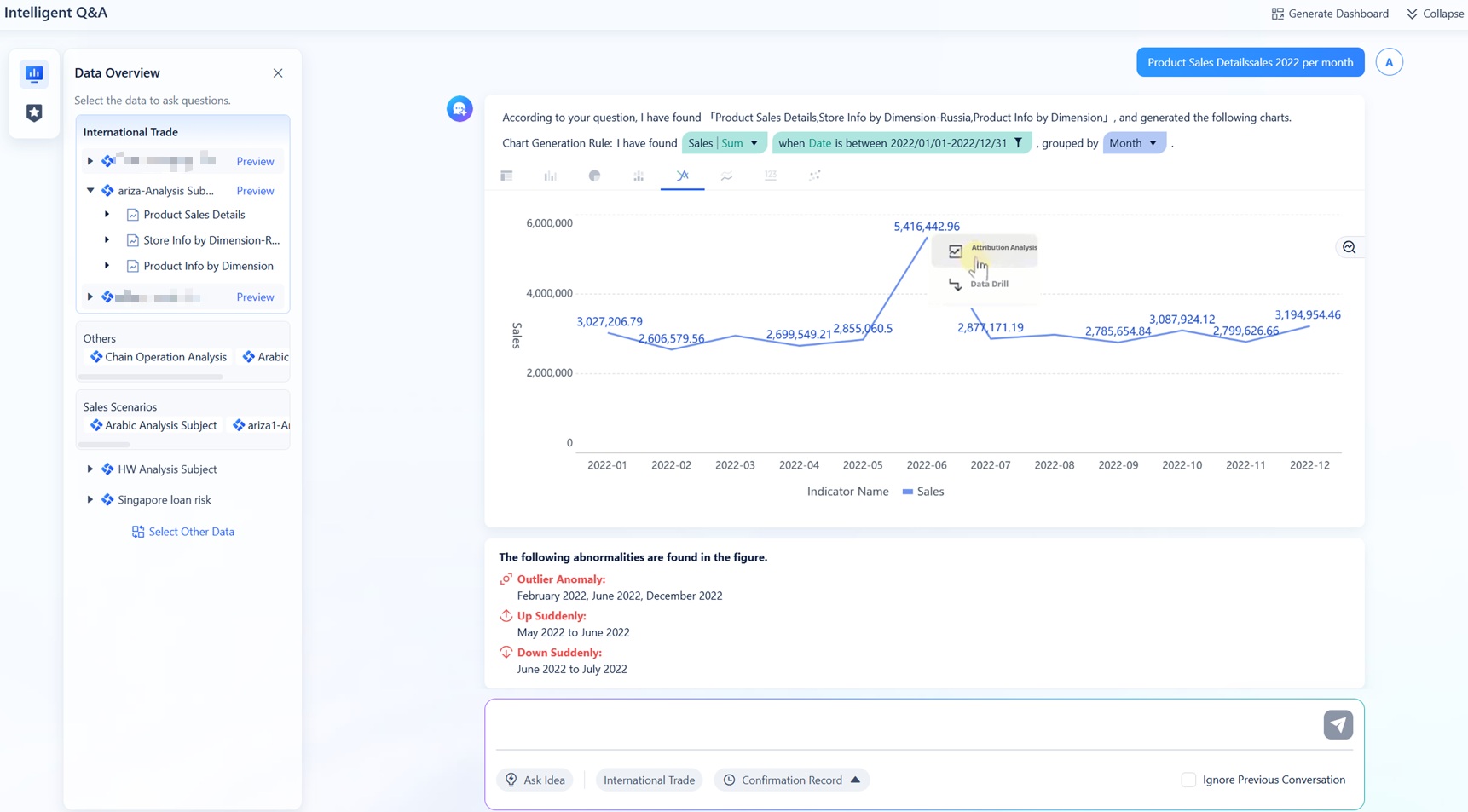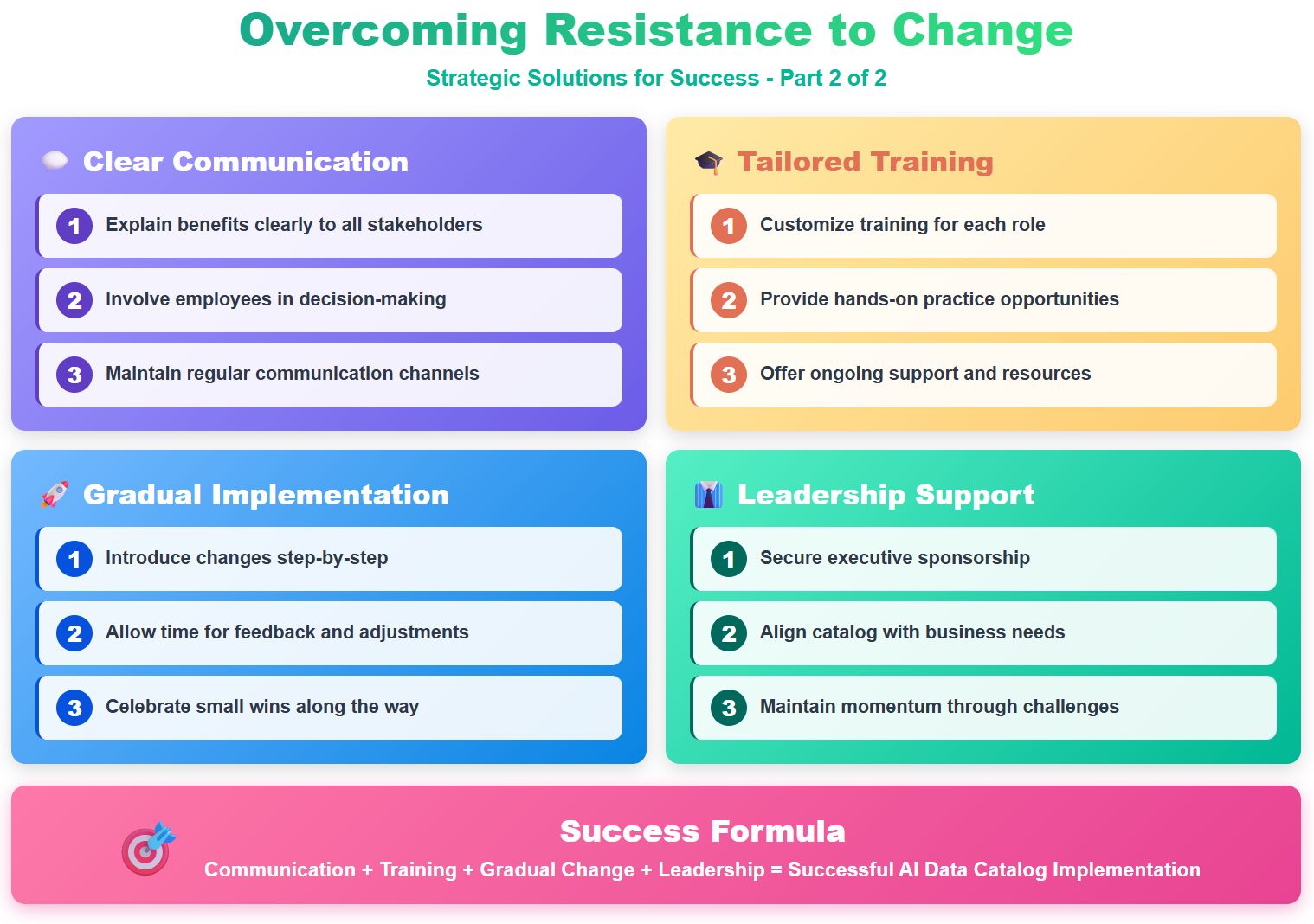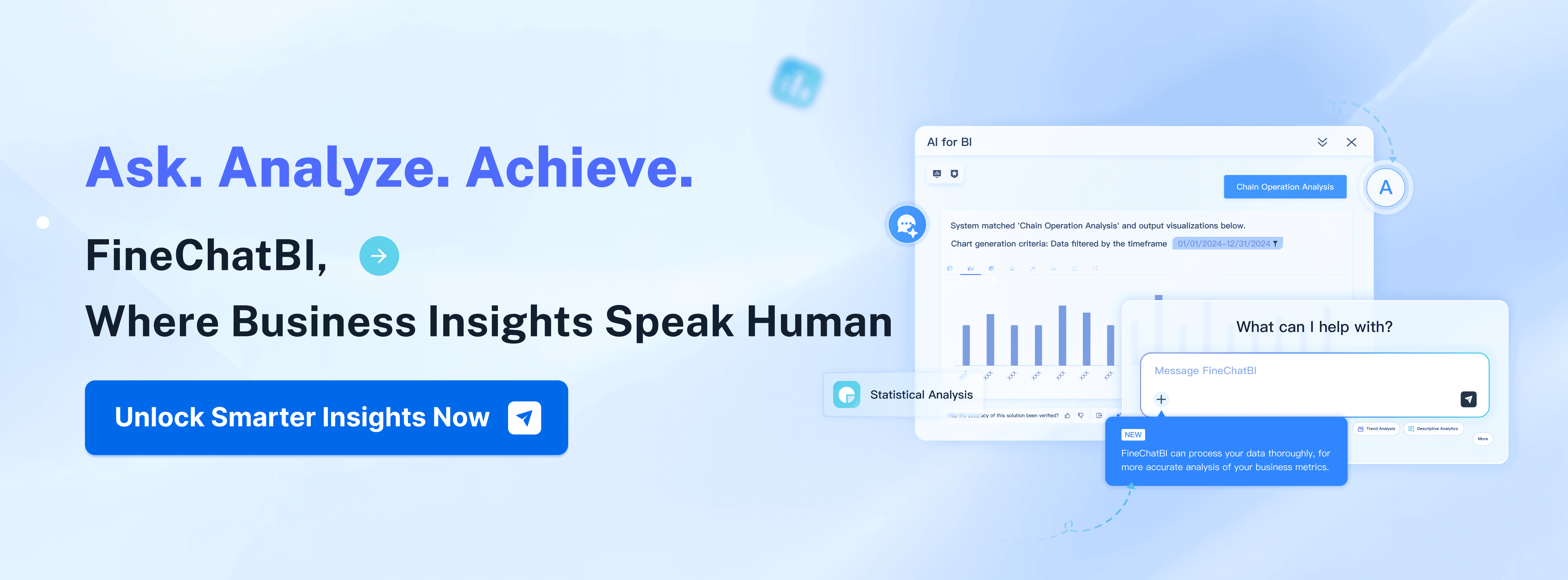An ai data catalog helps you organize, find, and manage your data across many systems. AI brings automation to this process, making it faster and smarter. You can use AI-powered catalogs to improve efficiency, boost customer experiences, and simplify compliance.
"Organizations are using data products and AI agents to achieve tangible outcomes—enhancing customer experiences, improving efficiency, and simplifying regulatory compliance,” says Wilson.
The market for these solutions keeps growing.
| Year | Market Size (USD) | CAGR (%) |
|---|---|---|
| 2022 | 718.1 million | N/A |
| 2032 | 5,235.2 million | 22.6 |
AI Data Catalog Basics

What Is an AI Data Catalog
You use a data catalog to organize, find, and manage your data. An ai data catalog takes this idea further by using ai to automate many tasks. You get a smarter way to handle your data, making it easier to discover, understand, and control information across your organization.
A data catalog has several core components that help you manage your data:
- Data discovery lets you search and find datasets quickly.
- Data profiling analyzes the characteristics of each dataset.
- Data lineage tracks where your data comes from and how it changes.
- Data governance supports compliance and internal policies.
You also benefit from tools that automate metadata management, evaluate data quality, and provide a user-friendly interface. These features make searching and browsing within the catalog simple for everyone.
A data catalog acts as the backbone of your data strategy. It centralizes metadata, automates discovery, and ensures governance transparency. You can break down data silos and promote sharing across teams. This approach empowers non-technical users to find and use data without relying on IT experts.
How AI Improves Data Catalogs
AI transforms the way you interact with your data catalog. Traditional data catalogs rely on manual updates and basic search features. AI data catalogs use automation and intelligent search to make your experience faster and more accurate.
| Feature | Traditional Data Catalogs | AI Data Intelligence Systems |
|---|---|---|
| Metadata Management | Manual updates, limited automation | Active, real-time updates via APIs |
| Search Capabilities | Basic keyword search without context | Intelligent, context-aware search using natural language |
| Data Quality Monitoring | Minimal to no monitoring | Continuous evaluation and anomaly detection |
| Governance | Limited support for policy enforcement | Automated classification and governance |
| User Accessibility | Primarily for technical users | Self-service access for all users |
| Observability | Static, no real-time monitoring | Proactive monitoring of pipeline health and performance |
AI data catalogs use machine learning to automate data tagging and classification. You can identify sensitive data, such as personal information, without manual effort. Data profiling tools analyze your data assets, check quality scores, and detect anomalies. Automated lineage mapping shows you how data flows and changes over time.
You get several benefits from these ai-powered features:
- Automatically create descriptions for data assets.
- Auto-suggest READMEs and data asset owners.
- Classify and tag data assets, especially sensitive ones.
- Get intelligent search recommendations for intuitive discovery.
- Perform bulk updates to your data assets.
- Generate and debug SQL queries using text prompts.
AI data catalogs also support data democratization. You can manage data access policies from a central platform, making sharing secure and efficient. Collaboration across teams becomes easier, and everyone can discover and use data. The catalog improves visibility into who created metrics and how they are used.
The knowledge graph gives rich, meaningful context and connections between datasets. Combining the LLM with an organizational knowledge graph is the key to capturing the true richness of context in an organization’s business framework, including relationships between data, metadata, people, processes, and decisions.
AI data catalogs offer a better user experience than traditional catalogs. You get automated metadata ingestion, personalized interactions, and proactive policy enforcement. Natural language queries let you ask questions and get actionable insights without needing SQL skills. Continuous learning and adaptation keep your catalog up to date, and higher engagement makes using the catalog enjoyable.
You can focus on high-value analytical work and decision-making. AI reduces manual tasks and increases productivity. Your organization benefits from improved data accuracy, better management, and efficient compliance.
Key Features of AI Data Catalogs

Metadata Management
You rely on metadata management to organize and understand your data. An ai data catalog automates this process, making it easier for you to keep track of your data assets. You benefit from features like automated metadata harvesting and data lineage tracking. These tools help you see where your data comes from and how it changes over time. Governance workflows guide you in managing access and compliance. Search and discovery functions let you find the data you need quickly. Intelligent metadata management uses ai to tag and classify data, saving you time and reducing errors.
- Automated metadata harvesting
- Data lineage tracking
- Governance workflows
- Search and discovery
- Intelligent metadata management
Ai data catalogs use natural language processing to identify and tag sensitive information. Machine learning algorithms classify and label data, improving efficiency. Platforms like Alation and Ataccama use ai for metadata crawling and organization. You see data quality metrics in the catalog, which helps you assess the reliability of each dataset.
Intelligent Data Discovery
Intelligent data discovery helps you locate and understand data across your organization. Ai data catalogs use advanced algorithms to automate this process. You can see how data is classified, tagged, and profiled for quality. Automated quality audits detect anomalies and missing values, so you trust the data you use.
| Algorithm Type | Functionality |
|---|---|
| Metadata Discovery | Automates the identification and collection of metadata from various sources. |
| Data Classification and Tagging | Organizes data into categories and applies relevant tags for easier access. |
| Automated Quality Audits | Detects anomalies, missing values, and inconsistencies in the data. |
| Data Profiling | Analyzes data to summarize its characteristics and quality. |
Natural language processing improves search capabilities in the data catalog. You can ask questions in plain language and get results without knowing technical terms. This makes data discovery more intuitive and accessible for everyone.
You request access to data instantly when you find a dataset. Ai evaluates your request in real time, streamlining approvals and making collaboration easier. You can find, understand, and trust the data you need, which helps you drive business value.
Data Governance and Compliance
Data governance and compliance are essential for protecting sensitive information and meeting regulations. Ai data catalogs support standards like GDPR, CCPA, and HIPAA. You use the catalog to assign ownership, track lineage, and monitor data quality. Ai tags and categorizes data, identifying personal or financial records automatically. Lineage mapping shows you how data moves through pipelines and cloud platforms. Anomaly detection alerts you to unusual patterns that may signal risks.
| Compliance Standard | Description |
|---|---|
| GDPR | General Data Protection Regulation, ensuring data protection and privacy in the EU. |
| CCPA | California Consumer Privacy Act, enhancing privacy rights for residents of California. |
| HIPAA | Health Insurance Portability and Accountability Act, protecting sensitive patient health information. |
You maintain centralized visibility across hybrid and multi-cloud environments. Ai generates natural language descriptions, making documentation easier for business users to understand. The catalog helps you collaborate with data teams, manage permissions, and ensure consistent terminology. You keep your data secure and compliant while making it accessible for analysis.
Benefits & Use Cases
Business Value for Organizations
You gain measurable improvements when you use an ai data catalog in your organization. The catalog helps you organize, find, and manage data efficiently. Automation powered by ai reduces manual work and speeds up data discovery. You see faster results and fewer errors. The catalog improves productivity and lowers costs.
| Metric | Pre-Implementation Baseline | Post-Implementation Improvement | Annual Savings (for 50 analysts) |
|---|---|---|---|
| Average time spent searching for data | 3-5 hours/week | 60% reduction | $400,000+ |
| Frequency of data quality incidents | N/A | Reduced | N/A |
| Compliance audit preparation duration | N/A | Reduced from weeks to days | N/A |
You notice that ai data catalogs automate data discovery. This shift lets your team focus on strategic tasks. You spend less time searching for information and more time analyzing data. The catalog increases productivity and reduces employee burnout. You also see cost savings from less manual rework and faster time-to-insight.
You can trust the catalog to keep your data organized and secure. Ai monitors data quality and detects anomalies, helping you avoid costly mistakes.
- AI-powered search frees up hours for valuable work.
- The catalog lowers operational expenses.
- You experience fewer data quality issues.
Real-World Example: FineChatBI
FineChatBI show how an ai data catalog solves real challenges for enterprises. You face problems like data silos, inconsistent formats, and strict privacy rules. The catalog helps you integrate data from different sources and systems. Ai ensures strong security and detects bias, keeping your data fair and reliable.

- You address data quality issues, such as preventing ai from guessing personal details.
- The catalog monitors data balance and involves diverse perspectives to reduce bias.
- You overcome integration challenges caused by data silos and varying formats.
- The catalog helps you comply with privacy regulations.
FanRuan uses FineChatBI to connect business intelligence tools with advanced ai dialogue engines. You get accurate data analysis and trustworthy results. The catalog supports self-service analytics, so you can explore data without relying on technical teams. Ai guides you through descriptive and prescriptive analysis, making decision-making easier.

You see how the catalog empowers you to break down barriers, improve data quality, and drive business growth.
Implementing an AI Data Catalog
Best Practices
You can achieve successful implementation of an ai data catalog by following a few proven steps. Early involvement of users helps you build trust and gather feedback. You should start with a pilot program and iterate based on real-world results. Assign clear roles so everyone knows their responsibilities. Share benefits and outcomes with your team to inspire adoption.
- Involve users from the beginning.
- Apply the catalog in stages and refine it.
- Define roles for catalog management and data stewardship.
- Communicate benefits and share success stories.
You need to prioritize integration and usability. Choose tools that work well with your existing systems and offer a user-friendly experience. Foster a culture where using the catalog becomes part of daily work. Encourage early adopters to champion the catalog and help others. Monitor usage and improve the catalog based on feedback and key metrics.
Tip: Document your progress and lessons learned. Sharing these insights motivates others to use the catalog and builds social support for your data initiatives.
Common Challenges
You may encounter several challenges when implementing an ai data catalog. Metadata management can be difficult if you have limited connectors or legacy systems. Data integration often proves complex because organizations store data in many formats and locations. You might struggle with metadata curation, making it hard to find relevant data or protect sensitive information.
- Metadata management issues
- Data integration difficulties
- Challenges in metadata curation
- Problems with responsibility assignment
- Hidden data transformations
- Misalignment in terminology
- Defining data sets and ownership
- Data culture and maturity gaps
- Long time to value

Resistance to change is common. You can overcome this by communicating clearly and involving employees in decisions. Provide training tailored to each role. Introduce changes gradually and allow for feedback. Leadership support and regular communication help maintain momentum and ensure the catalog aligns with business needs.
You use an ai data catalog to organize, discover, and manage data across your business. The table below shows how you benefit from its core functions:
| Core Function | Description |
|---|---|
| Improved Data Discovery | You find relevant data quickly and efficiently. |
| Automated Metadata Management | You organize and manage metadata with less manual effort. |
| Enhanced Data Quality | You identify and correct errors, keeping data reliable. |
| Streamlined Data Governance | You track lineage and documentation for compliance. |
| Democratization of Data Access | You access data easily, even without technical skills. |
You see real business impact when you use ai-powered insights to improve data quality and decision-making. FanRuan and FineChatBI help you unlock the full value of your data. You can take these steps to start your journey:

- Define a use case that fits your company’s culture and meets executive and user needs.
- Work with users to make the catalog part of daily tasks and ensure it fits their needs.
- Track key performance indicators and use feedback to improve your data catalog.
You build a strong foundation for data-driven growth and innovation.
FAQ

The Author
Lewis
Senior Data Analyst at FanRuan
Related Articles

What is The Best AI for Data Analysis
What is the best AI for data analysis in 2025? FineChatBI leads with real-time insights, plain language queries, and enterprise reliability.
Lewis
Nov 12, 2025

Essential Skills You Need for AI Data Analyst Jobs in 2025
Master key technical and soft skills for ai data analyst jobs in 2025, including programming, data visualization, and business acumen.
Howard
Nov 11, 2025

Big Data in the Age of AI: Trends and Opportunities for 2025
Big data in the age of AI accelerates innovation, enabling smarter decisions, real-time analytics, and new business opportunities for 2025.
Howard
Nov 11, 2025




